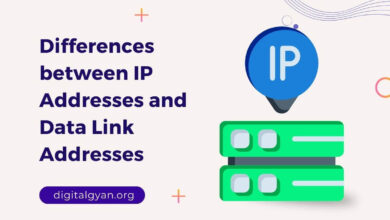Meaning and Purpose of a Cybersecurity Disaster Recovery Plan
In today’s interconnected digital landscape, organizations face a constant threat of cyber attacks. With new and sophisticated forms of cybercrime emerging, it has become imperative for businesses to have robust cybersecurity measures in place. One key aspect of these measures is a well-designed and comprehensive recovery plan for cybersecurity disasters.
In this blog post, we will explore the meaning of cybersecurity disaster recovery plans that organizations can adopt to safeguard their digital infrastructure.
Meaning of Cybersecurity Disaster Recovery Plan
Cybersecurity disaster recovery plans are strategic frameworks that outline the steps and procedures to be followed in the event of a cyber attack or data breach. These plans aim to minimize the impact and downtime caused by such incidents and expedite the recovery process.
The primary objectives of a cybersecurity disaster recovery plan are twofold. First, it focuses on ensuring the continuity of critical business operations despite the occurrence of a cyber disaster. Second, it aims to mitigate the potential damage to digital assets, including sensitive data and systems.
The significance of disaster recovery in the realm of cybersecurity cannot be overstated. Organizations that fail to prepare adequately for cyber disasters risk severe financial losses, damage to their reputation, and potentially irreparable harm to their clients and stakeholders.
Types of Cybersecurity Disaster Recovery Plans
Backups and data recovery plans are crucial components of any cybersecurity disaster recovery strategy. Organizations must regularly back up their data to ensure that, in the event of a cyber attack or system failure, they can recover essential information and resume operations as quickly as possible.
There are different backup methods available, including full backups, incremental backups, and differential backups. Each method has its own advantages and disadvantages, and organizations must choose the one that suits their needs and storage capabilities. It is also imperative to store the backup data in off-site locations to enhance its security and protect it from physical disasters.
Incident Response Plans
An incident response plan outlines the actions and procedures to be followed immediately after a cybersecurity incident is detected. It is crucial for organizations to have a well-defined incident response plan in place to ensure a timely and efficient response to cyber attacks.
Effective incident response plans typically include procedures for identification, containment, eradication, and recovery. They also assign roles and responsibilities to individuals within the organization and provide guidelines for communication and collaboration among different teams. Regular incident response drills and simulations can further enhance the effectiveness of these plans.
Business Continuity Plans
While disaster recovery plans focus on the technical aspects of recovering from a cyber attack, business continuity plans take a broader perspective. Business continuity plans aim to ensure that critical business functions continue uninterrupted, even in the face of cyber disasters.

Organizations must identify their most crucial business processes and develop strategies to maintain their continuity. This may involve establishing alternative work locations, implementing redundant systems, and developing contingency plans for personnel and resource allocation. Regular reviews and updates of business continuity plans are essential to adapt to evolving threats and technological advancements.
Communication and Crisis Management Plans
Effective communication plays a critical role in cybersecurity disaster recovery. Communication and crisis management plans outline the channels, protocols, and key stakeholders involved in managing and communicating during a cyber disaster.
These plans establish clear lines of communication between different teams, departments, and external stakeholders, such as customers, partners, and regulatory bodies. By pre-establishing communication channels and protocols, organizations can ensure a swift and coordinated response to cyber incidents, minimizing confusion and ensuring the dissemination of accurate information.
Also Read: How to Recover Deleted Emails and Restore Them Completely?
Elements of an Effective Cybersecurity Disaster Recovery Plan
Prior to designing a cybersecurity disaster recovery plan, organizations must conduct risk assessments and business impact analyses. Risk assessments help identify and prioritize potential threats and vulnerabilities, while business impact analyses determine the potential consequences of a cyber disaster on critical business functions.
Establishing Recovery Time Objectives (RTO) and Recovery Point Objectives (RPO)
Recovery time objectives (RTO) and recovery point objectives (RPO) are essential elements in disaster recovery planning. RTO defines the maximum acceptable downtime after a cyber disaster, while RPO determines the maximum acceptable data loss. Organizations must establish realistic RTO and RPO targets based on their critical business processes and technological capabilities.
Assigning Roles and Responsibilities
A successful cybersecurity disaster recovery plan explicitly defines roles and responsibilities for individuals within the organization. This ensures that there is a clear chain of command and accountability during the recovery process. Key personnel, such as incident response teams and executives, should have clearly defined roles to prevent confusion and enable efficient decision-making.
Implementing Continuous Monitoring and Testing Protocols
A proactive approach to cybersecurity includes continuous monitoring and testing of the disaster recovery plan. Regular assessments and audits help identify any gaps, weaknesses, or areas for improvement. By simulating potential cyber incidents and conducting drills, organizations can refine their plans and ensure all personnel are familiar with their roles and responsibilities.
Identifying and Integrating Emerging Technologies
The cybersecurity landscape is constantly evolving, and organizations must stay updated with emerging technologies and best practices. Integrating new technologies, such as artificial intelligence, machine learning, and advanced threat detection systems, can significantly enhance the resilience and effectiveness of cybersecurity disaster recovery plans.
You May Like: Top 6 Free Data Recovery Software for Windows and Mac
Conclusion
Cybersecurity disaster recovery plans are essential safeguards against the rising threat of cyber attacks. By understanding the meaning of these plans and exploring the different types available, organizations can better protect their digital assets, minimize downtime, and restore operations swiftly. However, it is important to note that each organization’s cybersecurity disaster recovery plan should be tailored to its unique needs, risks, and resources. Regular reviews, updates, and testing are vital to ensure the plan remains effective and can withstand the ever-evolving cyber threats.



